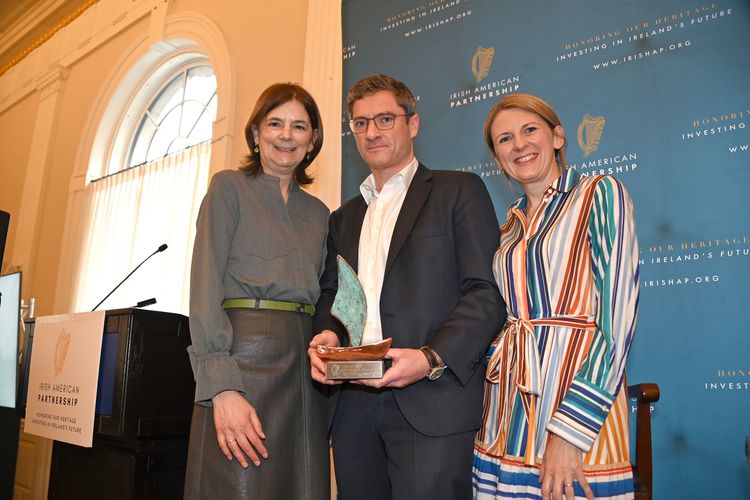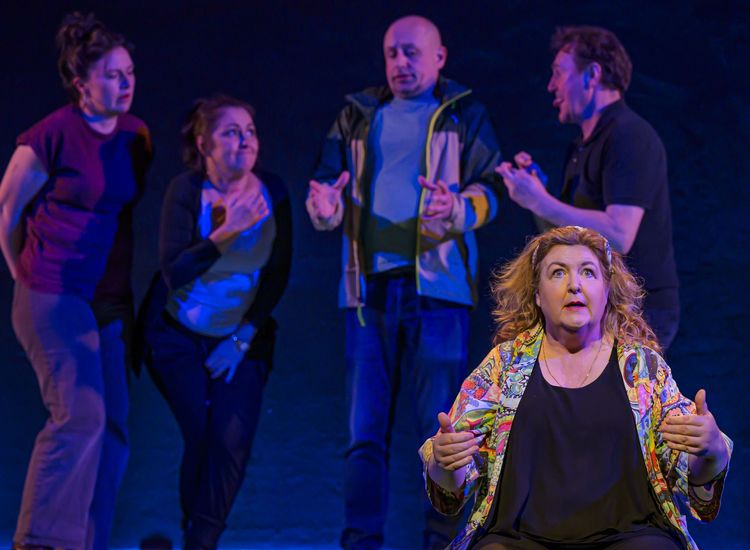Rhiannon Giddens is a recipient the MacArthur Genius Grant and is sponsored by Ireland’s Music Network.
By Colleen Taylor
On both sides of the Atlantic, up and down the North American and European coasts, people are raving about Rhiannon Giddens, a blues and old time musician from North Carolina. As another songwriter recently reminded me, this kind of hype can be as detrimental to good music as it is beneficial, sometimes leading to too much popularity, too much ego, and not enough of the humble roots that make folk music distinctive from other genres.
Not to mention, hype is by definition over-exaggeration with a subtextual implication of lived disappointment. Still, Giddens has earned her hype: she is a Grammy-award winning multi-instrumentalist, exquisite singer, and unique in her proclivity for African-American historical tunes and instruments, particularly her replica of a 19th century banjo. Most impressively of all, she is a recipient of the MacArthur Genius Grant (2017). On the eve of her first Irish tour, a collaboration with Italian pianist, accordionist and percussionist Francesco Turrisi, I went to see what the hype was all about.
Rhiannon Giddens and Francesco Turrisi teamed up through the sponsorship of Ireland’s Music Network, an organization striving to develop accessible, quality live music in Ireland, and the Irish Arts Council. Both musicians are expats in Ireland—Limerick and Wicklow, respectively—and have worked with Irish artists and genres before. Still, their music remains definitively of their origins. It was an odd pairing, but the unparalleled skill of each respective musician and their mutual vocation to recover and preserve historical narratives, songs, and instruments made them an exciting and promising collaboration. Again, hype. The new duo are currently touring around Ireland, from Dublin, where they launched the tour, along the southern coast, to the west, and then back up north, completing the circle back east in Newbridge. I, along with other expats and native Dubliners, caught them in the capital for their first night at Dublin’s Sugar Club, where the duo played two sets of original and 19th century tunes from the American South and the Mediterranean.
I did not exactly enjoy the concert. I felt unsettled—psychologically by the music and physically by the space. An overcrowded room, few seats, having to stand during the long set, and sparse banter in between songs all combined to heighten my discomfort. When I walked out into a torrential downpour after the close, the loud applause still ringing in my ears, I felt sheepishly relieved to be on my way. However, the next day, when re-reading Giddens’s biography, I began to doubt myself. Her work in Afro-Am cultural recovery and reinvention is unparalleled and honorable to the core, and Giddens seemed as cool and skilled as I anticipated, as did Turrisi. I began to think that maybe I did enjoy the show—she is a MacArthur genius, after all. But upon reflection, I have realized that both facts can be true—that Giddens and Turrisi can be gifted, even genius folk musicians and I can nevertheless, have not enjoyed their show. In fact, as paradoxical as it may seem, the latter helps to explain the former.
The Giddens-Turrisi concert was, for me, like reading a Bronte novel. With each turn of the page I know I am immersed in classic, moving, masterpiece literature, and yet I feel perturbed, ill at ease, like I want to relocate to the safety of Austen’s Pemberley. Thankfully, Giddens and Turrisi are not Catherine and Heathcliff, but the music they made on that rainy Dublin night elicited some of that creepy, tortured aura and historical haunting that one finds in Bronte or, better yet, Toni Morrison. Such an ambiance matched the content: Giddens sang several original compositions about the slave trade. The somber, keen-like intonations of her voice, the ghostly hand gestures and closed eyes as she sang were, of course, the perfect mode in which to access the unspeakability of that silenced, horror-stricken history. In typical adopted Irish fashion, she made a lighthearted joke after each song, and the audience laughed, but I still felt unbalanced. In between the weight of these songs, the duo played contra tunes, an Italian folk song, and Turrisi treated the audience to some melodies on his unique one-string piano. The stand-out, however, was Giddens’s song about, to use her word, “bondage,” entitled “At the Purchaser’s Option,” featuring exquisite operatic vocals (her background training) and that same haunting and destabilizing effect.
When I think on the gig now, separating myself intellectually from my discomfort, I realize that the kind of music Rhiannon Giddens plays should not necessarily be enjoyed—and that is exactly the point. After all, to “enjoy” a song about a mother and child being auctioned like chattel is either complete ignorance or inhumanity. Maybe Giddens’s music hit me too hard, made me hear the voice of my white privilege in all its ugliness. I don’t share her background but I do share the nation resulting from that painful history of bondage.
On the other hand, as I listened to Giddens’s skilled but unnerving vocals, I found myself thinking not just of plantation America, but also of keening. When she introduced her song as one about “bondage,” I wondered what music like that meant in a room filled with eager Irish fans in a post-diaspora, post-Celtic Tiger era. Sure, we have Irish immigration songs to spare, enough rebel ballads to fill a long evening, but can you name a “real” famine song—that is, one that captures the atrocity? Keening is, unfortunately, no more, but when I listen to early 20th century recordings of keens now—well, I have that same discomfited response I had at the Sugar Club. Perhaps my unease at the Giddens/Turrisi gig also stemmed from a nagging question at the back of my head: has Irish music become too anesthetized to its own gothic history?
Giddens belongs in the spotlight (as opposed to the less favorable hype) because her music is not afraid to be loud in its critique and in its pain—not afraid to make a music writer like me feel uncomfortable, even irritable. As critics, musicians, and listeners, we might not always enjoy it—but we should learn from it.










